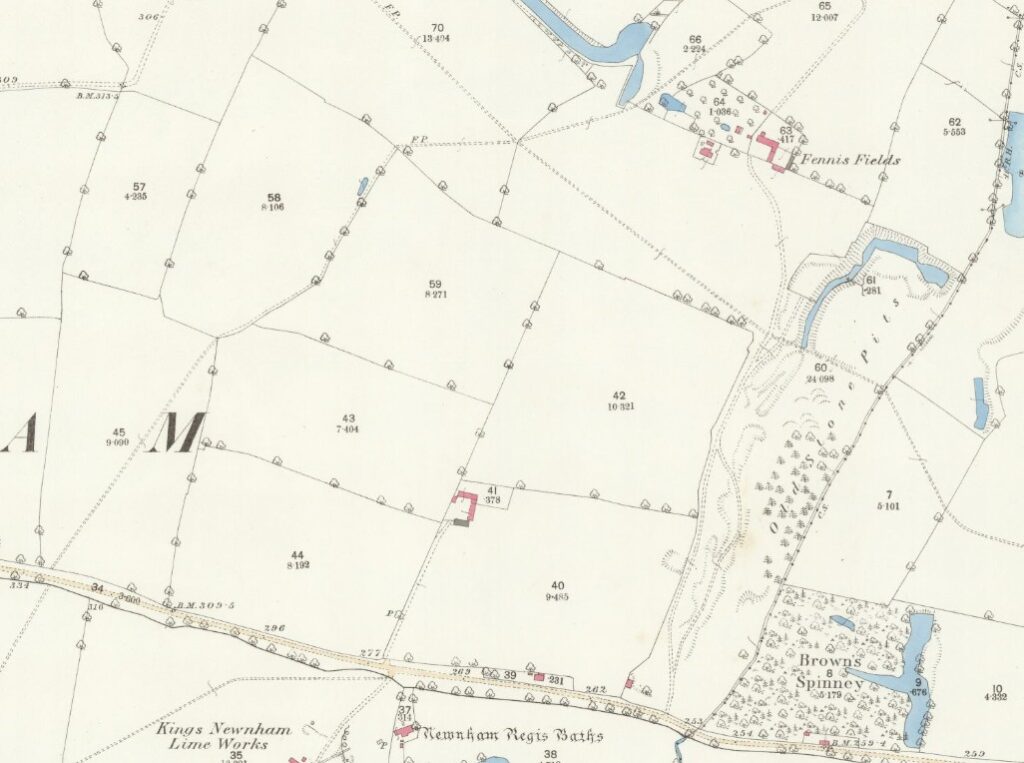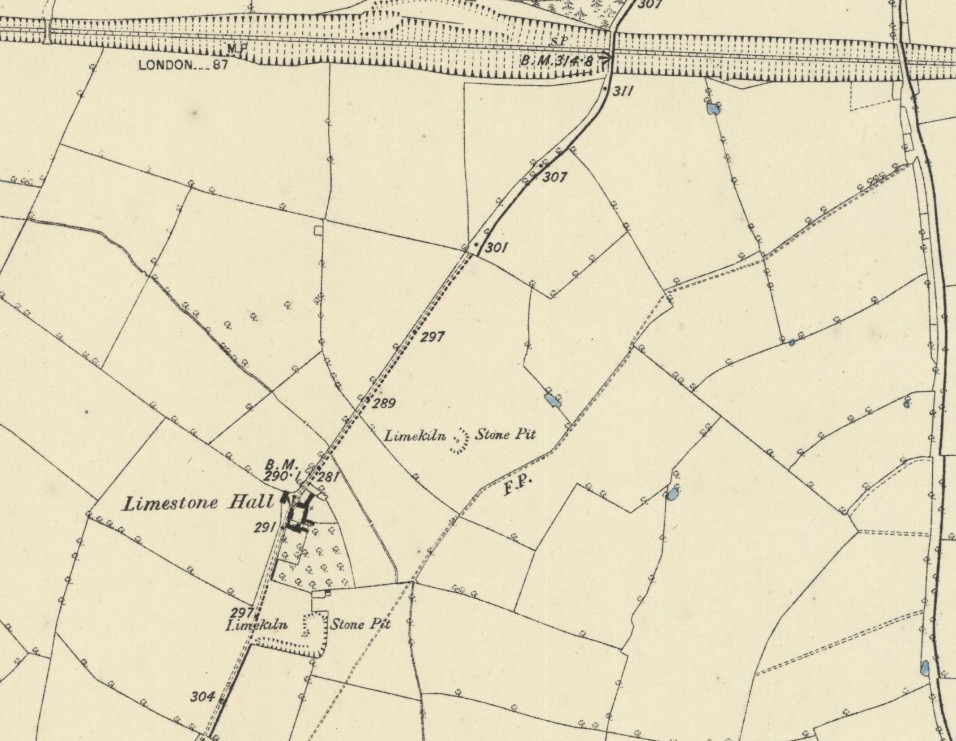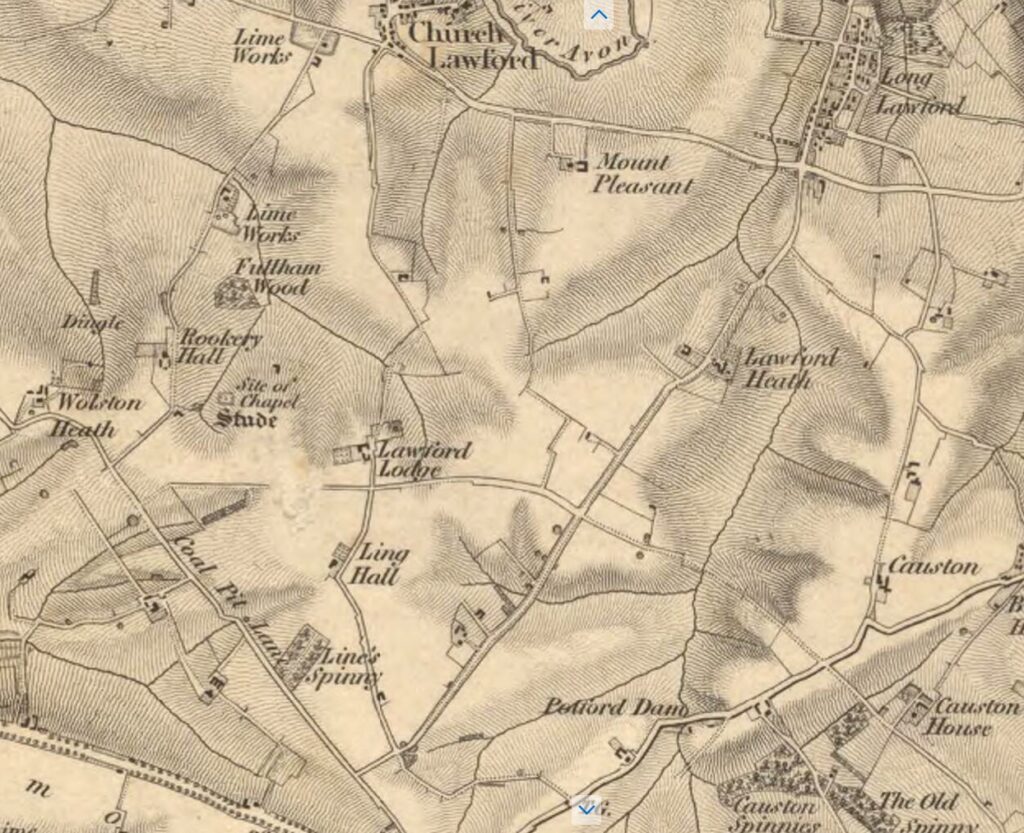With a rural history going back many centuries, the geology of the area also offered an option to those used to making their living from farming. The local limestone was known as Blue Lias, and could be used in the production of both lime as a fertiliser (quick lime (calcium oxide) or slaked lime (calcium hydroxide)), and as a mortar for building work (slaked lime). The limestone would be “burnt” in some form of kiln, to create the calcium oxide, and water could be added to produce the slaked lime.
As a result a number of lime workings sprang up locally, and the owners were known as “lime burners”.
Perhaps the workings in Kings Newnham made use of the local Oxford Canal, including the spur to Fennis Fields, to either import coal for the burning process, or export the resultant lime. The map below shows the tip of the canal spur at the top, the main lime works at the bottom, and a separate site within Fennis Fields Farm labelled as Old Stone Pits.

Similarly the lime works in Church Lawford (in the Limestone Lane area) could make use of the new railway line between London and Birmingham when it opened in 1838.

A comprehensive book on Lime Burning by John P H Frearson, a local historian, can be found in Rugby Library – entitled “Early Lime Works in the Rugby Area”. The author has also written books on the main Rugby Portland Cement Industry, but that is seen as a separate process.
The above maps are reproduced with the permission of the National Library of Scotland. They were produced in 1886 and the top one was revised in 1903/5. These maps and more can be found via this link. There are different ways of navigating the maps there – the “Marker Pin” option is ideal for finding maps that cover a particular area, and the “Side By Side” viewer is excellent for comparing an old map with a current day view.
One of the original Ordnance Survey Maps from the 1830s (pre-dating the Railway) also shows a second Limeworks in Limestone Lane nearer the Rugby to Coventry Road. It also shows a feature marked as a Dingle, which is seen as earthworks relating to quarrying.


